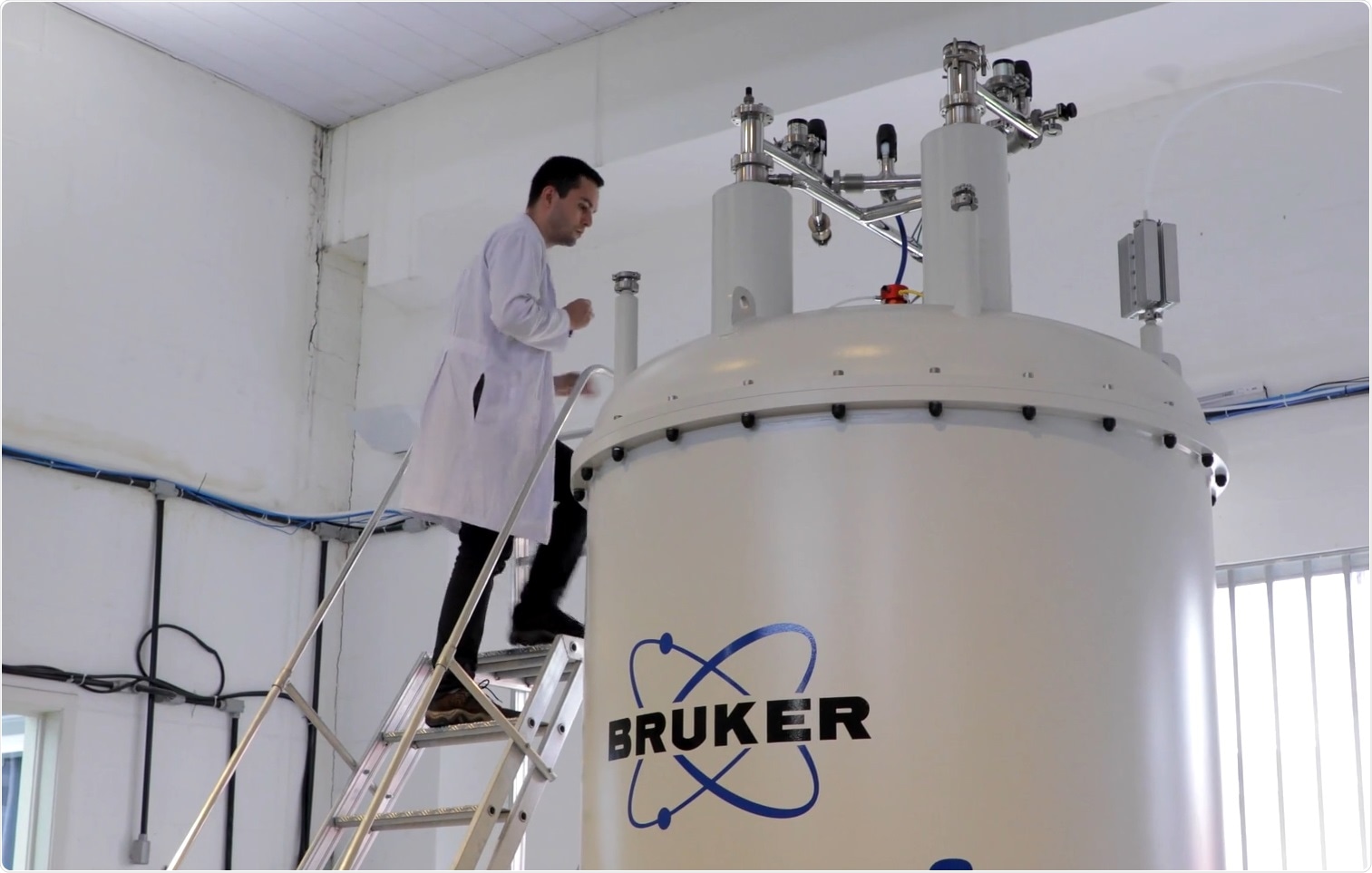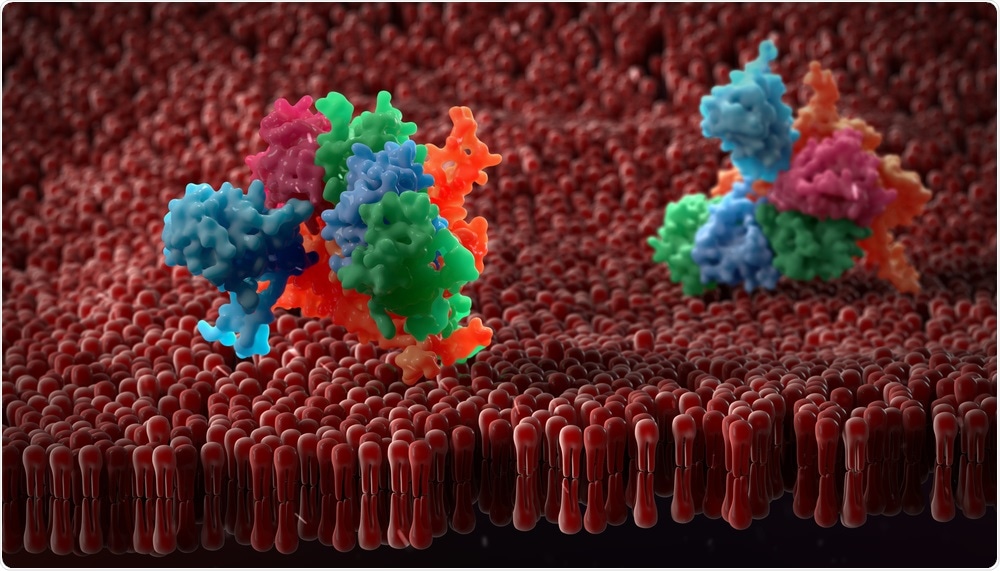An interview with Fábio Almeida, describing the work he does at the University of Rio de Janeiro in the National NMR Center, involving the structure and dynamics of proteins.
Please can you introduce yourself and the research that you carry out at the Federal University of Rio de Janeiro?
My name is Fábio Almeida. I work at the Federal University of Rio de Janeiro in the National NMR Center, which is part of the Center of Structural Biology and Bioimaging.
This multi-user facility is open to a number of users within the university and also to those from other universities and research institutions in Brazil and abroad. Our NMR spectrometers are housed in the structural biology unit, but we also have other units available for the bioimaging of small animals and microscopy.
My research is focused on three topics. All of them involve the structure and dynamics of proteins, with the main focus on the role of dynamics and protein mechanisms.
NMR in Cancer Studies
NMR in Cancer Studies from AZoNetwork on Vimeo.
I study thioredoxin, which is a very well-known protein. The structure was solved more than three decades ago, but there are still dynamical and structural elements that need to be described. Recently, we described one of these dynamical elements; that is the water cavity that is essential and key to the biological mechanism of the protein.
We also studied thioredoxin in higher eukaryotes, which had a gain of function − the ability to carry out post-translational modifications, such as transient oscillations and dilations. The mechanism that mediates transient oscillation is not very well-known, so we use NMR to study this mechanism.
The other part of our work involves flavivirus capsid proteins. We describe the binding mechanism of dengue virus capsid proteins to intracellular lipid droplets, which is related to lipid metabolism. This binding is essential, so we used NMR to map the interaction of this dengue virus capsid protein with these lipid droplets. Since the binding is essential, we know that this could shed light on how to develop new compounds that can prevent it.
More recently, we have been studying the Zika virus capsid proteins, for which we have just solved the structure. We are doing similar studies on the interaction of Zika virus capsid proteins with intracellular molecules, to mediate its biological mechanism.
All of these interactions involve the dynamics of these flavivirus capsid proteins, so NMR is unique to and very important for such studies.
How is NMR used to study protein structure?
NMR is one of the three methods used to study protein structure, the others being X-ray crystallography and cryomicroscopy. NMR is the only method that enables the studies to be conducted in solution, which is very important. NMR can also be used to perform solid-state studies.
NMR is special and unique because you can study not only the structure but also the dynamics of a protein. Using NMR, we can measure the dynamic property of each nucleus in the protein, which is very important, because the dynamic is intimately related to the biological mechanism of the protein.
Recently, there has been a revolution in structural biology involving cryo-electron microscopy. This method enables the structures of higher molecular complexes to be resolved, which is very important.
NMR plays a very important role in this new area of structural biology because it is the only method that enables the studies of dynamics. For instance, the multiple domains seen in some proteins is a gain of function in evolution, so they are very important and NMR can help us understand the motion of these domains.
Thirty percent of the genome has what we call intrinsically disordered regions, which are segments of the protein that do not have a unique structure. Importantly, an intrinsically disordered region is actually a point of flexibility.
In this sense, NMR is again unique as it is the only method that enables us to understand these linkers within multidomain proteins. These linkers are also present in smaller proteins. We can also call them “entropic linkers,” because they contribute to the entropy of the system and are key to the biological mechanism.

Why is this important in the context of human pathogens and the proteins involved in causing disease?
All of the pathogenesis is carried out by proteins and nucleic acids − perhaps their association with one another and, sometimes, the recognition of carbohydrates and polysaccharides. NMR is unique because we can use it to look at and measure properties directly at the atomic level.
For all these biological macromolecules (proteins, carbohydrates, and nucleic acids), NMR is one of the main methods for probing and asking biological questions.
With NMR, we can measure not just the protein structure, but the dynamics of each segment in these molecules and the dynamics of the interaction. All the biological mechanisms involve interactions between these molecules in the cell: protein−protein interactions, RNA−DNA interactions, and also protein−carbohydrate interactions in small molecules.
These interactions represent all the pathological mechanisms and biological mechanisms involved and NMR is very good for measuring them and the role dynamics plays. In this sense, NMR is a very powerful tool.
How are samples prepared for NMR analysis?
To prepare proteins, you need to select the gene of interest − the gene that is involved in the pathological or biological mechanism you are keen to study. You need to clone that gene in bacteria or a eukaryotic system. Bacteria is more commonly used, but there are several options for cloning genes in these heterologous systems.
Then, you express this protein, which enables you to label it with an isotope. You can reach the protein with nitrogen 15, carbon 13, deuterium, and maybe other nuclei that are involved in this biological mechanism. However, these are the three magnetically active nuclei that are important for doing NMR measurements.
After labeling and purifying the protein, you then have to set up the work conditions for doing the NMR studies. You have to set the temperature, the pH and mimic the physiological conditions as closely as possible. Then, you can test the effect of osmolytes and the effect of high pressure, for example. You can put the sample in different conditions and test what then happens to the structure and dynamics of the protein.
In summary, sample preparation involves cloning the gene, expressing the protein, labeling the protein with an isotope, purifying it and then performing biological assays to see what the ideal conditions are for working with the protein.
How can NMR spectroscopy be used to study cancer biology and can it guide the development of new treatments?
There are several cancer targets −mainly proteins − that are expressed by so-called oncogenes, the genes that express the proteins involved in the formation of tumors. Usually, these proteins are involved in controlling the cell cycle. The protein may be a tumor suppressor such as p53, which is involved in 50% of all cancers. Mutations in this protein are responsible for dysregulating the cell cycle, which is the main cause of cancer.
Saying that, NMR has also been key to understanding the biological role, as well as the structure and dynamics of p53, so a number of articles on this protein have been published.
NMR is unique in this sense, because you can also probe other effects, such as aggregation. There is a group in our university that studies p53 aggregation and how it enables the development and transformation of the cell that results in the cancer forming.
NMR is unique because you can probe the effects in solution, whether it be determining the structure, measuring the dynamics, or putting proteins under stress to test conditions, for example. We also have groups in this facility that study other cancer-related targets such as Grb2, another modulator of the cell cycle. There are actually many more examples I could list here.
 urfin | Shutterstock
urfin | Shutterstock
What do you look for when choosing new instrumentation for your laboratory?
First, you should think very carefully about what the scientific goal is and be very exact about what the spectrometer is going to be used for. If the spectrometer is going to be used for general purposes, there is a very high chance that mistakes will be made. You do not need to be too specific, but it is good to decide whether the machine is going to be used to analyze structure and dynamics or small molecules, for example.
Once you are clear about the scientific goal and what the instrument is going to be used for, then you can also be clear when deciding on the magnetic field, which largely determines how much the cost will be. Sometimes, it's much better to use three spectrometers with lower fields that would cost the same amount as using a higher field instrument, so this is a very important point to consider.
Next, you need to choose the electronics. You have to pinpoint each detail of the electronics in order to make the spectrometer ideal for what you are using it for. You need to decide how many channels you need, based on how many nuclei you are going to measure. Here, for instance, all of our spectrometers have four channels, because we measure protons, nitrogen 15, carbon 13, and deuterium… although not everybody will need four channels. You also need to decide on the pulse and therefore the power you will be using for each channel. You may need very short pulses, meaning you need the power to be high, for example.
Once you have chosen and installed the electronics, you must test whether it is behaving the way you need it to. You need to set it up in accordance with the company’s specifications regarding magnetic field stability, pulse field stability and so on.
Maintenance is also very important, especially for us, being in Brazil and so far from Europe and the United States where the biggest centers are. You need to check whether the company has a maintenance crew in your country, that would be able to solve any problems with the electronics, for example, and also sometimes help you with the experiment. This partnership with the company is very important.
Another important point is to involve someone who is an expert in the field of NMR, either an NMR manager who has a Ph.D. in NMR or someone who is specialized in using the NMR spectrometer. This is as important as the quality of the equipment.
What makes an NMR spectrometer from Bruker stand out from the other NMR spectrometers on the market?
In our NMR center, we have six Bruker NMR spectrometers of several magnetic field strengths. Bruker provides good quality equipment that is always improving as time goes on. The magnets are highly homogenous and stable and they only use low amounts of helium, which is expensive.
The electronics are also of high quality and we are usually able to access the Bruker engineers, who talk you through the details regarding the electronics you need.
Also, when we are in Brazil, we really need this partnership with the company, which in our case, ensures the equipment works around the clock. If you invest in a spectrometer, you need to make sure it is going to work 24/7 and it is not just the managers in the NMR center that are responsible for that, but also the maintenance crew at Bruker.
This partnership and the customer service/technical support provided is very important and needs to be considered before you choose which company you are going to purchase your spectrometer from.
About Fábio Almeida

Fabio C. L. Almeida is an expert in protein structure and dynamics by nuclear magnetic resonance (NMR). He has uncovered the structure of several proteins by NMR. He has also made numerous important discoveries surrounding the structure and dynamics of plant defensins.
Fabio and his group showed that despite the conserved folding, defensins display a wide variation in dynamics, which enabled the mapping of binding regions and description of the mechanism of membrane recognition.
The group also showed that dynamics are also the key for the understanding of the mechanism of membrane recognition of antimicrobial peptides. Pre-existent order in flexible peptides permits discrimination between the regions of specific and non-specific binding.
Fabio´s group also described the structure and dynamics of the water cavity of thioredoxin, which is an essential structural element for catalysis. Fabio is the director of the National Center of NMR (CNRMN) and president of the Brazilian NMR Association (AUREMN).